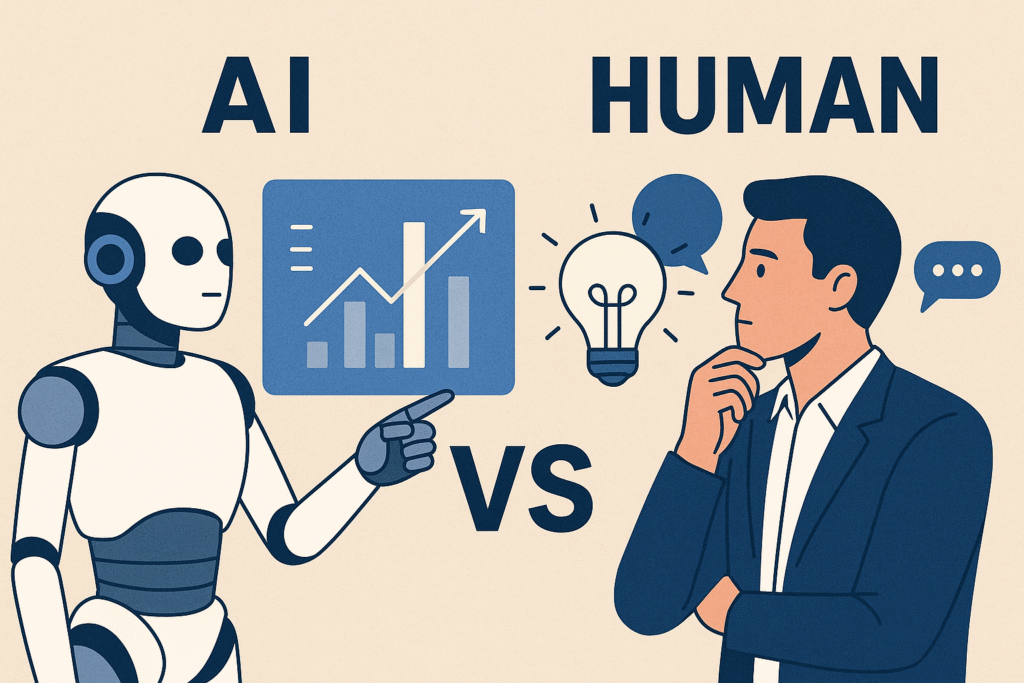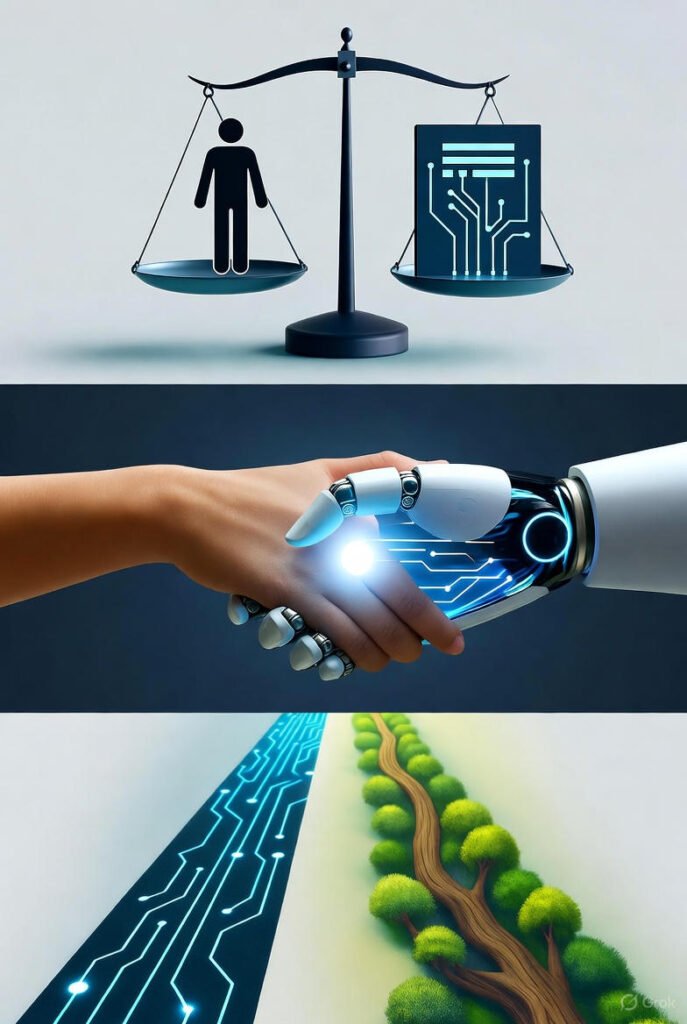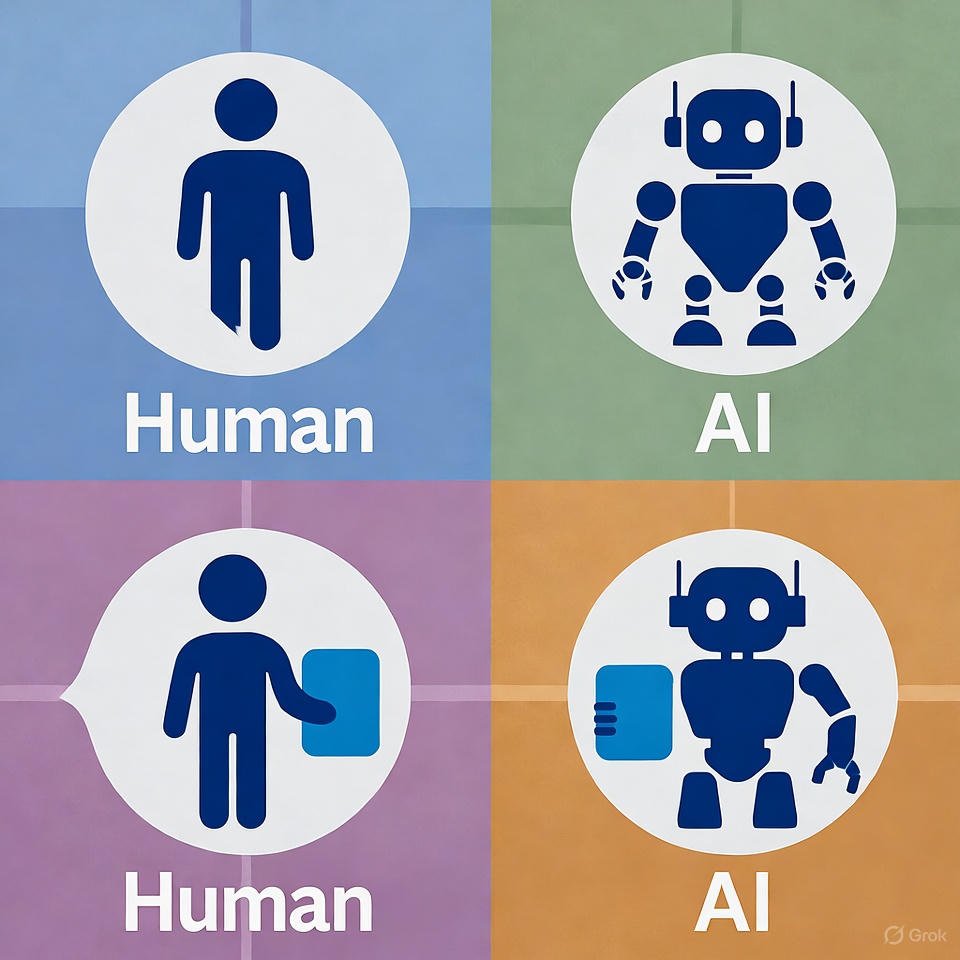
Introduction
Over the past decade, one question has echoed through boardrooms, classrooms, and coffee shop debates alike: Can artificial intelligence really outperform humans?
From self-driving cars to ChatGPT writing essays and robots performing surgeries, AI seems unstoppable. Yet, even with all its speed, precision, and data-processing power, one truth remains—humans built it. So, when it comes to real-world tasks—those messy, unpredictable, and emotionally charged moments—who truly performs better: AI or humans?
In this article, we’ll explore the fascinating competition and collaboration between human intelligence and artificial intelligence. We’ll look at real-world examples, analyze where each excels, and see how a partnership between the two might shape the future of work, creativity, and problem-solving.
1. The Battle of Intelligences: Defining AI and Human Strengths
Before diving into comparisons, let’s clarify what each side brings to the table.
Artificial Intelligence (AI): The Machine Mind
AI systems are designed to simulate human thinking. They can:
- Process vast amounts of data in seconds
- Learn patterns using machine learning
- Perform repetitive or analytical tasks with consistent accuracy
AI’s biggest strength is efficiency. It never gets tired, doesn’t make emotional decisions, and can scale operations far beyond human capacity. Think of AI as the ultimate analytical powerhouse—it can crunch numbers, detect patterns, and predict outcomes faster than any human ever could.
Human Intelligence: The Emotional and Creative Mind
Humans, on the other hand, possess:
- Empathy and emotional intelligence
- Creativity and innovation
- Intuition and moral judgment
We understand context, tone, and cultural nuances—things AI often struggles with. Humans are flexible thinkers who can handle ambiguity, learn from minimal data, and find meaning where algorithms see only noise.
So, the stage is set: AI’s raw computational power versus human adaptability and creativity. Let’s see how they perform in real-world scenarios.
2. Where AI Outperforms Humans
There’s no denying that AI has revolutionized many industries. In certain types of tasks, machines are simply faster, cheaper, and more reliable than humans.
a. Data Processing and Analysis
AI excels wherever large amounts of structured data exist.
For example:
- Healthcare: AI models like Google’s DeepMind can detect diabetic retinopathy and breast cancer earlier than human specialists.
- Finance: Algorithms can analyze market data and execute trades in milliseconds.
- Manufacturing: AI-based quality control systems detect defects that even the human eye might miss.
The takeaway? When it comes to pattern recognition and number-crunching, AI wins hands down.
b. Repetitive and Routine Work
Tasks that require precision and repetition—like sorting, labeling, or assembly-line work—are AI’s stronghold.
Robots powered by AI can:
- Work 24/7 without breaks
- Maintain near-perfect accuracy
- Eliminate human error
In Amazon warehouses, for instance, AI robots manage logistics faster than any human team could, improving delivery times and minimizing errors.
c. Speed and Scalability
AI doesn’t tire.
While a human analyst might review 20 reports in a day, an AI can review 20,000—accurately.
In content creation, AI tools can draft thousands of personalized marketing messages or analyze millions of customer reviews in minutes. Humans simply can’t match that scale.
d. Prediction and Forecasting
AI thrives in predictive analytics.
From weather forecasting to stock trading, AI models analyze historical data to forecast trends with remarkable accuracy.
For instance:
- Google’s DeepMind predicts energy consumption in data centers, reducing costs by up to 40%.
- In healthcare, predictive AI identifies patients at risk of chronic diseases before symptoms appear.
AI’s foresight makes it indispensable in strategic planning and risk management.

3. Where Humans Still Outshine AI
While AI dominates logic and data-driven tasks, humans still lead in creativity, empathy, and moral reasoning—areas that define what it truly means to be intelligent.
a. Creativity and Innovation
AI can create, but it can’t originate ideas in the same intuitive way humans can.
For example:
- AI can compose music based on patterns, but it doesn’t understand the emotions behind a melody.
- It can write articles or design logos, but the true “spark” of creativity still comes from humans.
A 2024 experiment by MIT found that while AI-generated art performed well technically, human-created art resonated more emotionally with audiences. Creativity, after all, is not just pattern recognition—it’s storytelling, emotion, and purpose.
b. Emotional Intelligence and Empathy
No matter how advanced, AI lacks genuine empathy.
In customer service, chatbots can answer questions but can’t truly comfort an angry or grieving customer.
Therapists, teachers, and leaders use tone, intuition, and empathy to connect—qualities AI cannot replicate.
Humans excel in emotionally complex environments:
- Healthcare: Doctors combine medical expertise with compassion.
- Education: Teachers inspire, motivate, and adapt to student emotions.
- Management: Leaders balance analytics with empathy when making people-centric decisions.
c. Ethical and Moral Judgment
AI operates on logic and data—it has no moral compass.
When ethical decisions arise, humans must intervene.
For example:
- Who is responsible if an autonomous car causes an accident?
- Should AI be allowed to decide who gets a loan or job interview?
Only humans can weigh such decisions based on ethics, empathy, and context.
d. Adaptability and Context Awareness
AI performs well within defined parameters but falters in unpredictable environments.
Humans, however, can:
- Adjust to new information instantly
- Read body language or tone
- Handle exceptions that fall outside “training data”
Imagine a robot waiter in a noisy restaurant. It might struggle to interpret changing orders or customer humor, whereas a human can effortlessly adapt.
e. Common Sense
AI models often lack basic common sense.
Ask an AI why it’s raining, and it might give you an atmospheric science lecture instead of saying, “Because clouds are full of water vapor.”
Humans use intuition and lived experience to bridge logical gaps—something AI still hasn’t mastered.
4. Real-World Comparisons: AI vs Human in Action
Let’s compare their performance across various industries.
| Task / Industry | AI Strengths | Human Strengths | Who Performs Better? |
|---|---|---|---|
| Healthcare Diagnosis | Speed, accuracy, early detection | Empathy, patient communication | AI + Human hybrid |
| Customer Support | 24/7 availability, quick answers | Empathy, emotional understanding | Human (for complex cases) |
| Creative Writing | Grammar, consistency | Emotion, storytelling | Human |
| Finance & Trading | Real-time data analysis | Judgment during crises | AI for trading; Human for strategy |
| Manufacturing | Precision, consistency | Problem-solving, supervision | AI with human oversight |
| Education | Personalized learning algorithms | Motivation, mentorship | Human + AI |
| Recruitment | Resume screening, data filtering | Evaluating personality, culture fit | Human |
| Driving & Logistics | Navigation, optimization | Handling unpredictable events | AI-assisted human drivers |
The pattern is clear: AI dominates efficiency-based tasks, but humans lead in creativity, ethics, and adaptability.
5. The Power of Collaboration: Humans + AI Together
The most exciting trend isn’t AI replacing humans—it’s AI augmenting human capabilities.
a. The Augmented Workforce
AI handles repetitive or analytical work, while humans focus on creativity and decision-making.
Examples:
- Content creation: AI drafts, humans edit.
- Healthcare: AI scans images, doctors diagnose holistically.
- Design: AI generates layouts, designers refine aesthetics.
This partnership creates what many call the centaur model—a hybrid intelligence where humans and AI amplify each other’s strengths.
b. Case Study: Journalism
News outlets like Reuters and Bloomberg use AI to generate reports from financial data, freeing human journalists to focus on investigative stories.
The result? Faster reporting and deeper storytelling—a win-win.
c. Case Study: Healthcare
AI assists doctors in detecting cancer, while physicians provide emotional care and contextual judgment.
AI doesn’t replace doctors—it makes them faster, more accurate, and better informed.
d. Case Study: Customer Support
Companies deploy chatbots for FAQs and routing, but human agents handle escalations requiring empathy or negotiation.
Together, they improve customer satisfaction and reduce costs.

6. Key Factors That Decide Performance
So, who performs better in real tasks depends on several factors:
1. Type of Task
- Repetitive and data-driven? → AI wins.
- Creative, emotional, or ambiguous? → Humans win.
2. Data Availability
AI needs vast, high-quality data. Without it, its accuracy drops. Humans can operate even with limited information using intuition and context.
3. Cost and Efficiency
AI is more cost-effective for scaling operations. Humans are better for high-stakes or nuanced decision-making.
4. Risk Tolerance
In environments where mistakes can be catastrophic (e.g., aviation, surgery), human oversight is non-negotiable—even if AI assists.
5. Learning and Adaptation
Humans learn from few examples; AI learns from millions. But once trained, AI executes at scale. Combining both learning modes offers unmatched efficiency.
7. The Challenges of Relying Too Much on AI
As AI becomes more powerful, overreliance introduces risks.
a. Bias in Algorithms
AI learns from human-generated data—and inherits our biases.
This can lead to unfair hiring, discriminatory credit scoring, or biased policing.
Only human oversight can ensure fairness.
b. Lack of Accountability
When AI makes a mistake, who is responsible—the developer, the user, or the machine?
This gray area poses ethical and legal challenges.
c. Creativity Plateau
If companies rely solely on AI for content or innovation, creativity stagnates.
Humans bring unpredictability—the ingredient that sparks true innovation.
d. Job Displacement
Automation threatens repetitive jobs.
However, it also creates new roles: AI trainers, ethicists, and data auditors.
The future workforce must reskill to stay relevant.
8. Future Outlook: The Evolution of Intelligence
AI is evolving rapidly—but so are humans.
a. The Rise of “Human-in-the-Loop” Systems
The best-performing systems in 2025 and beyond are not fully automated—they involve human input.
From Tesla’s autopilot supervision to human-AI co-pilots in design software, collaboration defines the future.
b. Education and Work Will Shift
AI will handle grunt work, allowing humans to focus on strategy, creativity, and empathy-driven roles.
Skills like critical thinking, ethics, and interdisciplinary learning will be more valuable than ever.
c. The Moral Frontier
As AI becomes more autonomous, humanity must decide where to draw ethical boundaries—especially in healthcare, military, and law enforcement applications.
This will require global cooperation and transparent regulation.
d. The Inevitable Partnership
Rather than AI versus humans, the future is AI with humans.
Together, they can solve global challenges—from climate modeling to disease prediction—faster and smarter than ever.
9. Practical Tips: How Businesses Can Balance AI and Human Roles
- Identify tasks suitable for automation.
Start with repetitive, rule-based processes (data entry, reporting, scheduling). - Keep humans in the loop.
Always have human oversight for ethical or critical decisions. - Use AI to augment, not replace.
Let AI handle data; humans handle direction. - Invest in reskilling.
Train employees to work alongside AI—data literacy and AI ethics will be essential skills. - Measure performance regularly.
Use metrics to evaluate the ROI of AI-human collaboration, not just automation rate.
Conclusion
So—who performs better in real tasks, AI or humans?
The honest answer: neither, on their own.
AI wins in precision, speed, and scalability. Humans win in creativity, empathy, and judgment. But together, they’re unstoppable.
The future isn’t about replacing one with the other—it’s about combining their strengths. Imagine doctors diagnosing faster with AI, writers refining content generated by algorithms, and teachers personalizing lessons with AI insights.
The competition narrative—AI versus humans—is giving way to collaboration: AI with humans.
Because when machine intelligence meets human wisdom, the result is not rivalry—it’s revolution.